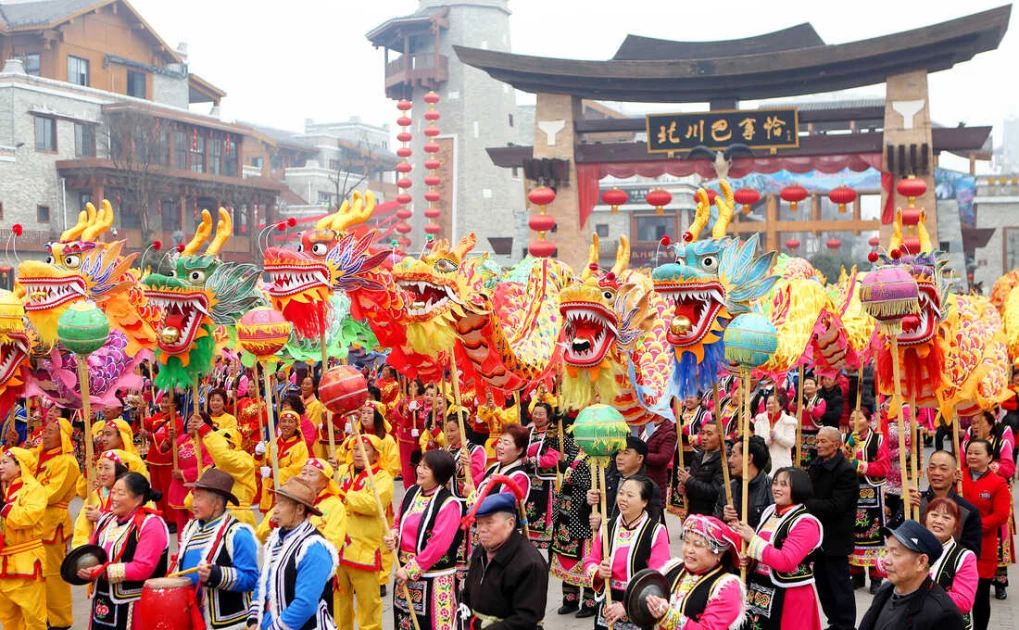Chinese New Year and Ethiopia’s Christmas: Awkward dates and Festivities explained

New Year celebrations in China.

Audio By Vocalize
The exodus is on, within and outside China, Chinese people
travelling to unite with their families and friends for the New Year celebrations. The New
Year holiday is the most revered occasion in the Chinese calendar.
Also called the Spring Festival, it marks the beginning of a
lunar year according to the traditional Chinese calendar. Businesses in China close
for 7 days to allow people to travel and join their families for the
festivities.
This year’s celebrations are promising to be even more elaborate
as it is the first time in three years that people in China are allowed to
congregate for festivities after the COVID-19 outbreak.
The whole country is literally painted red during the
celebrations, a colour that is believed to bring good luck in Chinese culture. Gifts
are also given in red envelopes. The streets are filled with fanfare that
includes mascots’ lion and dragon dances, fire cracking and magician shows. Families
indulge in Chinese traditional delicacies.
The intriguing part is that the celebrations fall between
January 21 and February 20, on the Gregorian calendar that is adopted in most
parts of the world.
To unravel this, we look at the traditional Chinese calendar
that is used to determine holidays, festivals and zodiac signs in China.
Traditional Chinese society uses a lunisolar calendar,
which combines aspects of both lunar and solar calendars.
A lunar calendar is based on cycles of the moon, with sighting
a new moon marking the beginning of another month. Each cycle is about 29.5 days.
A lunar year has 12 months, and between 354 to 384 days (12*29.5). A lunar year is 11 days shorter than a solar calendar. For this reason, the lunar calendar tends to drift out of the cycle of seasons. To correct this a process called intercalation is undertaken, in which a 13th month, intercalary, is added approximately after three years.
Lunar calendars are mostly for cultural and religious activities
across the world. Muslims, for example, use Hijri – a lunar calendar to
determine dates for important holidays and occasions.
This year’s Chinese New Year will be celebrated on Sunday,
January 22.
A solar calendar, on the other hand, is based earth’s cycle
around the sun. The earth takes 365.25 days for a complete journey around the
sun. A solar year, therefore, has 365 days or 366 days for a leap year.
Gregorian calendar, which is used in the Western world and
adopted in many parts of the world, is a solar calendar.
Ancient Egyptians were the first people to develop and adopt
a solar calendar. It helped them accurately predict flooding on River Nile.
Their calendar, however, had 12 months of 30 days each.
Their inability to account for the 5 extra days made their calendar drift into
error over time.
Julius Caesar of the ancient Roman Republic tried to correct
the calendar in 45 BCE assigning 30 0r 31 days to 11 months except for February and adding a leap year after 4 years. His amendments [Julian calendar],
however, prolonged the year by a quarter of a day.
The current solar calendar [Gregorian calendar] was proclaimed
by Pope Gregory XIII in the year 1582. By that time the Julian calendar had accumulated
a 10-day error. The Pope corrected this by scrapping the days October 5-14 and
removing a leap year when it fell on a century year, except when it was
divisible by four. Gregorian calendar is the one in use in most parts of the
world.
It puzzles many to hear that Ethiopians celebrate Christmas
on January 7. The Ethiopian Tewahedo calendar is adopted from the Julian
calendar which is used by many Eastern Orthodox church believers.
The calendar does not obey the leap year rule, instead, it
has 13 months, 12 months of 30 days each and an additional month of 5 or 6 days.
The additional month is an intercalary, Greek for forgotten days.
Eastern Orthodox believers, including Ethiopia’s Tewahedo,
believe that Jesus Christ was born 7 years later than it is in the Roman Catholic faith.
This makes the calendar 7 years behind.
The calendar also puts the New Year on September
11, on the most popular Gregorian calendar.


Leave a Comment